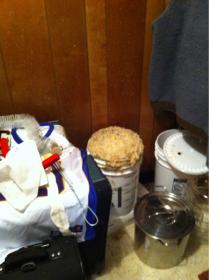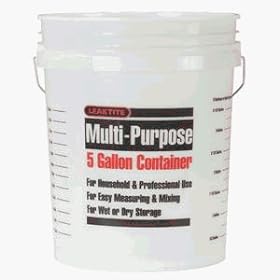Yet another new person trying to attempt brewing! Now in Canada, I find that brewing is more of a necessity than a hobby because alcohol prices are a lot higher here than in the US. But moving to my question/point.
I bought a kit from Nobel Grape and got a Cooper's 'real ale' malt extract kit. Now I know you can simply boil this up, dump it in the fermenting bucket, pitch your yeast etc, snap the lid, stick in the airlock and let it do its magic and that no secondary is needed, HOWEVER! I chose to follow the instructions that Nobel Grape gave me since this is my first time doing this and in the step that talks about pitching the yeast, it says once its added to wort, it says to "place the lid on top of the fermenter, do not snap it down". Then to check it in 12-24 hours and I will see evidence of yeast activity, (which I do, since its been 24 hours since I did this) and in 2 or 3 days to rack it to my secondary.
So I'm wondering, has anyone ever done that method? Actually NOT snap the lid down? Right now I have it just sitting on the bucket with a bag over the top to try to keep any dust etc from entering through the hole that the airlock would normally go. So far it seems to be doing what the instructions say, but I just thought I'd get some opinions on this matter.
Cheers
- Steve
I bought a kit from Nobel Grape and got a Cooper's 'real ale' malt extract kit. Now I know you can simply boil this up, dump it in the fermenting bucket, pitch your yeast etc, snap the lid, stick in the airlock and let it do its magic and that no secondary is needed, HOWEVER! I chose to follow the instructions that Nobel Grape gave me since this is my first time doing this and in the step that talks about pitching the yeast, it says once its added to wort, it says to "place the lid on top of the fermenter, do not snap it down". Then to check it in 12-24 hours and I will see evidence of yeast activity, (which I do, since its been 24 hours since I did this) and in 2 or 3 days to rack it to my secondary.
So I'm wondering, has anyone ever done that method? Actually NOT snap the lid down? Right now I have it just sitting on the bucket with a bag over the top to try to keep any dust etc from entering through the hole that the airlock would normally go. So far it seems to be doing what the instructions say, but I just thought I'd get some opinions on this matter.
Cheers
- Steve















































![Craft A Brew - Safale BE-256 Yeast - Fermentis - Belgian Ale Dry Yeast - For Belgian & Strong Ales - Ingredients for Home Brewing - Beer Making Supplies - [3 Pack]](https://m.media-amazon.com/images/I/51bcKEwQmWL._SL500_.jpg)













